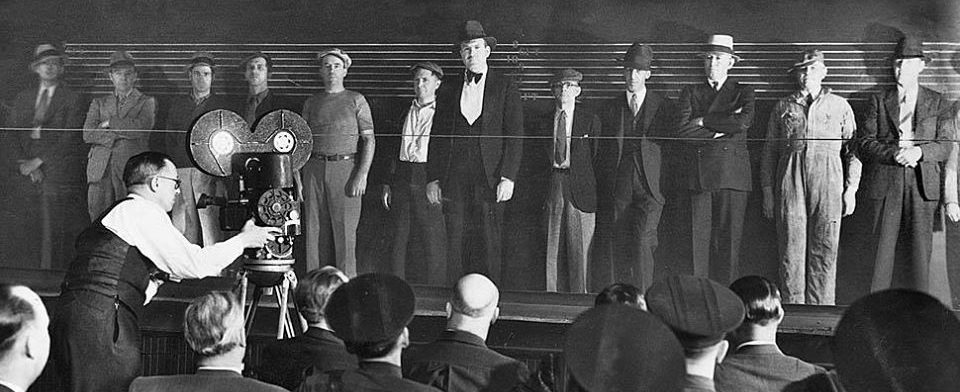 At the time of its dedication in 1891, the Immanuel Presbyterian Church, designed by James H. Bradbeer dominated the southeast corner of the then-remote Tenth & Pearl streets. By 1926 this stretch of Pearl St. had long since become part of Figueroa and the southward progression of the city had caught up to and the church, which found itself in the shadow of modern progress.
At the time of its dedication in 1891, the Immanuel Presbyterian Church, designed by James H. Bradbeer dominated the southeast corner of the then-remote Tenth & Pearl streets. By 1926 this stretch of Pearl St. had long since become part of Figueroa and the southward progression of the city had caught up to and the church, which found itself in the shadow of modern progress.
On March 28, 1926, as the some 460 churches within the Los Angeles city limits were gearing up for Holy Week, Immanuel Presbyterian’s minister Rev. Herbert Booth Smith used part of his sermon to address recent remarks by eastern clergymen proclaiming the automobile to be the “invention of the devil,” blaming them for decline church attendance as people seemed more inclined to heed the call of the open road on Sundays, heading for country, beach or mountains rather than church.
Rev. Smith countered that the automobile could be “trained to go to church,” noting that Los Angeles cars were evidently very well trained, judging by the long row of automobiles that filled the parking places in the neighborhood of his church every Sunday. In fact, those arriving late had a hard time finding a parking place.

The 900 block of Figueroa St. in August 1926 looking south toward Immanuel Presbyterian, showing the new (1924) Playhouse theater of the Friday Morning Club, where the current Broadway hit Cradle Snatchers would have its run in November; and the 1910 Belmont apartments. The YWCA’s new Hotel Figueroa for ladies was just across the street. LAPL
The lack of parking was indeed a problem. Only a couple of days before that sermon, the church had advertised its Tenth & Figueroa location for sale or lease in anticipation of moving to a new home at Wilshire & Berendo. Originally, back in 1921, Immanuel Presbyterian had planned to replace the current building with a larger one on the same footprint.
In the meantime. E.L. Doheny’s Pan-American Petroleum Co. had erected the Petroleum Securities Building at the southwest corner of Flower & Tenth streets. The 11-story edifice designed by architects Meyer & Holler, was completed in November 1925. Blinking down on Immanuel Presbyterian was the mammoth (163ft-x-50ft) double-faced electric roof sign. Letters 28-feet high spelled out PAN-GAS in flashing red, white and green bulbs (the company’s colors).
Ultimately, it was next-door neighbor E.L. Doheny who met the $700,000 asking price for the Tenth & Figueroa site. The deal was announced in July, a few months before Doheny headed east to testify in the pending bribery and conspiracy trial relating to his lease of the US Navy’s Teapot Dome oil reserves back in 1921.
The last services were held at the 1891 home of Immanuel Presbyterian on September 24, 1927. The building was demolished about 1929 and became a gas service station.
Top image: LAPL




